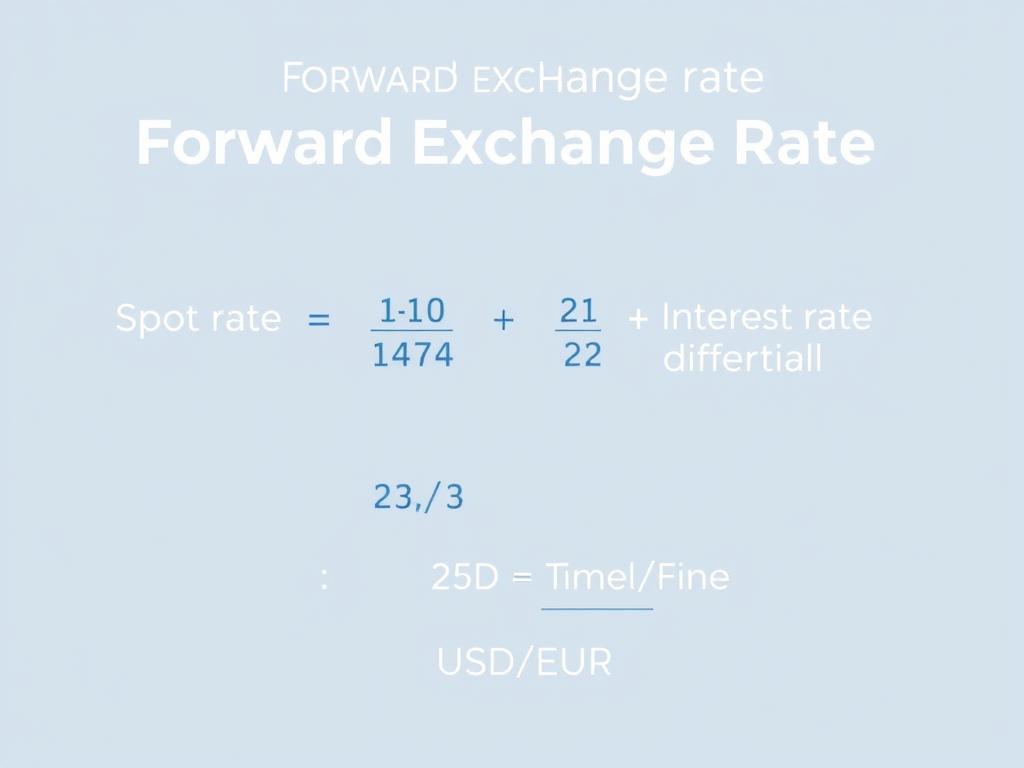
In today’s global economy, businesses and investors face constant exposure to currency fluctuations that can significantly impact profits and financial planning. Forward contracts in foreign exchange offer a powerful solution to manage this uncertainty. This comprehensive guide explains how these financial instruments work, their benefits, and how you can use them to protect your business or investments from market volatility.
What is a Forward Contract in Foreign Exchange?
A forward contract in foreign exchange is a customized agreement between two parties to buy or sell a specific amount of foreign currency at a predetermined exchange rate on a future date. Unlike spot transactions that settle within two business days, forward contracts allow you to lock in an exchange rate today for a transaction that will occur weeks, months, or even a year in the future.
These contracts are private agreements typically made between businesses and financial institutions or between two financial institutions. They’re designed to protect the parties involved from adverse movements in currency exchange rates that could otherwise impact the cost of international transactions.
“A forward contract essentially allows you to buy now and pay later at today’s exchange rate, regardless of how the market moves in the interim.”
How Forward Contracts Work
Understanding the mechanics of forward contracts can help you determine if they’re right for your business or investment strategy. Here’s a breakdown of how they function:
Key Components of a Forward Contract
Forward Rate Calculation
The forward rate isn’t simply a guess about future exchange rates. It’s calculated based on the current spot rate and the interest rate differential between the two currencies involved. This calculation follows the interest rate parity theory, which accounts for the time value of money.

Practical Example
Example: A US-based company needs to pay €500,000 to a European supplier in 6 months. The current EUR/USD exchange rate is 1.10 (€1 = $1.10).
Without a forward contract, the company is exposed to exchange rate risk. If the euro strengthens to 1.20, the payment would cost $600,000 instead of $550,000 – a $50,000 increase.
By entering into a forward contract today at a rate of 1.12, the company locks in a total payment of $560,000, regardless of how the market moves. This provides certainty for budgeting and eliminates the risk of currency fluctuations.
Benefits of Using Forward Contracts

Advantages
- Eliminates uncertainty by locking in exchange rates for future transactions
- Enables more accurate financial forecasting and budgeting
- Protects profit margins from being eroded by adverse currency movements
- No upfront premium payment required (unlike options)
- Customizable terms to match specific business needs
- Helps manage cash flow by providing certainty on future payments
Limitations
- Cannot benefit from favorable currency movements after contract is set
- May require a deposit or margin requirement
- Legally binding commitment that cannot be easily canceled
- Potential for margin calls if exchange rates move significantly
- Counterparty risk if the other party defaults
Protect Your Business From Currency Volatility
Download our free guide to learn how forward contracts can help your business manage foreign exchange risk effectively.
Business Applications of Forward Contracts
Forward contracts in foreign exchange are versatile tools used across various business scenarios. Understanding these applications can help you identify opportunities to implement them in your own operations.
Importers & Exporters

Companies that buy or sell goods internationally can use forward contracts to lock in exchange rates for future payments or receivables, protecting profit margins from currency fluctuations.
International Investors

Investors with foreign assets can hedge currency exposure to ensure that investment returns aren’t diminished by adverse exchange rate movements when converting back to their home currency.
Property Buyers

Individuals purchasing property abroad can use forward contracts to lock in the exchange rate between property agreement and settlement, providing certainty on the final purchase amount.
Case Study: Manufacturing Company
A US-based manufacturing company imports components from Japan worth ¥50 million quarterly. With fluctuating USD/JPY rates, the company struggled to maintain consistent pricing and profit margins.
By implementing a forward contract strategy, they locked in exchange rates for the entire fiscal year. This allowed them to:
- Accurately forecast costs for the year
- Maintain stable pricing for customers
- Protect profit margins from currency volatility
- Focus on core business operations rather than currency speculation
The result: Even when the yen strengthened unexpectedly by 8% mid-year, the company’s costs remained unchanged, saving approximately $320,000 compared to spot market transactions.
Forward Contracts vs. Futures Contracts
While forward and futures contracts both allow you to lock in exchange rates for future transactions, they have important differences that affect their suitability for different situations.

| Feature | Forward Contracts | Futures Contracts |
| Trading Venue | Over-the-counter (OTC) private agreements | Exchange-traded, standardized contracts |
| Customization | Highly customizable (amount, date, currencies) | Standardized contract sizes and settlement dates |
| Regulation | Less regulated | Heavily regulated by exchanges |
| Margin Requirements | Typically 5-10% deposit, varies by provider | Daily mark-to-market settlement |
| Liquidity | Cannot be easily sold to third parties | Highly liquid, can be bought and sold easily |
| Counterparty Risk | Higher (depends on the counterparty) | Lower (exchange acts as counterparty) |
| Typical Users | Businesses with specific hedging needs | Traders, speculators, large institutions |
How to Implement Forward Contracts in Your Business

Step-by-Step Implementation Process
Important Considerations
Hedging Ratio: Many businesses choose to hedge only a portion of their foreign exchange exposure (e.g., 50-75%) to balance protection against adverse movements while maintaining some flexibility to benefit from favorable movements.
Contract Duration: Shorter contracts (1-3 months) provide more flexibility but require more frequent renewal. Longer contracts (6-12 months) provide extended certainty but limit your ability to adjust to changing business conditions.
Provider Selection: Compare not just rates but also deposit requirements, margin call policies, and the provider’s financial stability.
Need Expert Guidance on Foreign Exchange Risk?
Our team of forex specialists can help you develop a customized strategy to protect your business from currency volatility.
Risks and Limitations to Consider
While forward contracts offer significant benefits for managing currency risk, they also come with potential drawbacks that should be carefully considered before implementation.

Key Risks of Forward Contracts
Alternatives to Consider
Depending on your risk tolerance and business needs, you might consider these alternatives or complements to forward contracts:
Currency Options
Provide the right (but not obligation) to exchange currency at a set rate, offering protection while preserving upside potential. However, they require an upfront premium payment.
FX Swaps
Allow for the exchange of currencies now with an agreement to reverse the transaction in the future, useful for temporary currency needs.
Natural Hedging
Matching foreign currency inflows with outflows to reduce net exposure without financial instruments.
Partial Hedging
Hedging only a portion of your exposure to balance protection with flexibility.
Conclusion: Is a Forward Contract Right for You?
Forward contracts in foreign exchange offer a powerful tool for businesses and investors to manage currency risk and create certainty in an uncertain global market. They’re particularly valuable for businesses with predictable foreign currency needs who prioritize stability over potential gains from favorable market movements.
The decision to use forward contracts should be based on your specific business needs, risk tolerance, and market outlook. For many organizations, a balanced approach that combines forward contracts with other risk management strategies provides the optimal mix of protection and flexibility.
By understanding how forward contracts work and carefully considering their benefits and limitations, you can make informed decisions about incorporating them into your financial strategy to protect your business from the unpredictable nature of currency markets.
Ready to Protect Your Business from Currency Volatility?
Download our comprehensive guide to forward contracts and other forex risk management strategies.
Frequently Asked Questions
What is the minimum size for a forward contract?
Minimum contract sizes vary by provider. Banks typically require larger minimums (often 0,000 or equivalent), while specialized forex providers may offer contracts starting from ,000 or even less.
Can I cancel a forward contract if my business circumstances change?
Forward contracts are legally binding agreements that cannot typically be canceled without significant costs. However, some providers offer flexibility to “roll” the contract forward or backward to a different date, though this usually involves adjusting the rate.
How far in advance can I book a forward contract?
Most providers offer forward contracts for up to 12 months, though some may extend to 24 months for major currency pairs. Longer-dated contracts typically require larger deposits and may have less favorable rates.
Are forward contracts regulated financial instruments?
Forward contracts are less regulated than exchange-traded instruments like futures. However, providers of forward contracts are typically regulated financial institutions. The level of regulation varies by country and jurisdiction.

Adam G
This post was created by Adam G, a seasoned financial writer with a passion for explaining currency exchange and market movements
